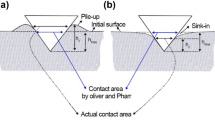Abstract
This paper investigates the effect of fibre lay-up and matrix toughness on mode I and mode II interlaminar fracture toughness (GIc and GIIc) of marine composites. Unidirectional and woven roving fibres were used as reinforcements. Two vinyl ester resins with different toughness were used as matrices. Results from both modes showed toughness variation that is consistent with matrix toughness. Values of GIc were not significantly influenced by fibre lay-up except at peak load points in the woven roving/brittle-matrix composite. Each peak load point, caused by interlocked bridging fibres, signified the onset of unstable crack growth. For unidirectional specimens, crack growth was stable and GIc statistically more reliable than woven roving specimens, which gave fewer GIc values due to frequent unstable crack growth. Mode II tests revealed that, except for crack initiation, GIIc was higher in woven roving composites. This was due to fibre bridging, perpendicular to the crack growth direction, which encouraged stable crack growth and increased energy absorption. Mode II R-curves were obtained for the woven roving specimens. These R-curves provide additional information useful for characterising delamination resistance. The paper concludes that composites with woven roving fibres show similar mode I delamination characteristics to the unidirectional composites; but their mode II delamination characteristics, after crack initiation, are quite different.
Similar content being viewed by others
References
Proc. 6th International Conference, Marine Applications of Composite Materials, Florida, March 1996.
Shenoi, R. A. and Wellicome, J. F. (eds.), Composite Materials in Marine Structures, Cambridge Ocean Technology Press, Cambridge, 1993.
Davies, P. and Lemoine, L. (eds.), 'Nautical Construction with Composite Materials', Proc. 3rd IFREMER Conference, Paris, Dec. 1992.
Gutierrez, J., Le Ley, F., and Hoarau, P., 'A Study of the Aging of Glass Fibre Resin Composites in a Marine Environment', ibid., pp. 338‐346.
Barnouin, B. and Renaud, P., 'Damage Observed During Inspection of Composite Pleasure Boats', ibid., pp. 389‐393.
European Structural Integrity Society (ESIS), Protocols for Interlaminar Fracture Testing of Composites, 1993.
ASTM D5528-94a, Standard Test Method for Mode I Interlaminar Fracture Toughness of Unidirectional Fiber-Reinforced Polymer Matrix Composites.
Davies, P., 'Fracture of Marine Composites', in E. Armaois (ed.), Fracture of Composites, Trans. Tech. Publications, Zurich, 1996, pp. 583‐596.
Sela, N. and Ishai, O., 'Interlaminar Fracture Toughness and Toughening of Laminated Composite Materials: A Review', Composites 20(5), 1989, 423‐435.
Hibbs, M. F., Tse, M. K., and Bradley, W. L., 'Interlaminar Fracture Toughness and Real-Time Fracture Mechanism of Some Toughened Graphite/Epoxy Composites', Toughened Composites, ASTM STP 937, 1987, 115‐130.
Hunston, D. L., 'Composite Interlaminar Fracture: Effect of matrix energy', Composites Technology Review 6, 1984, 176‐180.
Madhukar, M. S. and Drzal, L. T., 'Fiber-Matrix Adhesion and Its Effects on Composite Mechanical Properties: IV. Mode I and Mode II Fracture Toughness of Graphite/Epoxy Composites', Journal of Composite Materials 26(7), 1992, 936‐968.
Albertsen, H., Ivens, J., Peters, P., Wevers, M. and Verpoest, I., 'Interlaminar Fracture Toughness of CFRP Influenced by Fibre Surface Treatment: Part I. Experimental Studies', Composites Science and Technology 54, 1995, 133‐145.
Johnson, W. S. and Mangalgiri, P. D., 'Investigation of Fiber Bridging in Double Cantilever Beam Specimens', Journal of Composites Technology and Research 9, 1987, 10‐13.
Bradley, W. L., 'Relationship of Matrix Toughness to Interlaminar Fracture Toughness', in K. Friedrich (ed.), Application of Fracture Mechanics to Composite Materials, Elsevier, Amsterdam, 1989.
Davies, P., 'Delamination', in I. K. Partridge (ed.), Advanced Composites, Elsevier, London, 1989, pp. 303‐329.
Burchill, P. J. and Pearce, P. J., 'Epoxy Acrylate-Based Resin', in J. C. Salamone (ed.), Polymeric Materials Encyclopaedia, Vol. 3, CRC Press, New York, 1996, pp. 2204‐2210.
Dow Plastics, Derakane Epoxy Vinyl Ester Resins, Technical Product Information.
Hull, D., An Introduction to Composite Materials, Cambridge University Press, Cambridge, 1981.
Irwin, G. R. and Kies, J. A., Journal of Welding 33, 1954, 193.
Davies, P. and Benzeggagh, M. L., 'Interlaminar Mode-I Fracture Testing', in K. Friedrich (ed.), Application of Fracture Mechanics to Composite Materials, Elsevier, Amsterdam, 1989, pp. 81‐112.
Hashemi, S., Kinloch, A. J., and Williams, J. G., 'Corrections Needed in Double Cantilever Beam Tests for Assessing the Interlaminar Failure of Composites', Journal of Materials Science Letters 8, 1989, 125‐129.
Davies, P. and Moore, D. R., 'Glass/Nylon-6.6 Composites: Delamination Resistance Testing', Composites Science and Technology 38, 1990, 211‐227.
Carlsson, L. A. and Gillespie, J. W., 'Mode-II Interlaminar Fracture of Composites', in K. Friedrich (ed.), Application of Fracture Mechanics to Composite Materials, Elsevier, Amsterdam, 1989, pp. 113‐157.
Russell, A. J. and Street, K. N., 'Factors Affecting the Interlaminar Fracture Energy of Graphite/Epoxy Laminates', Proc. ICCM-IV, Tokyo, 1982, 279.
Hudson, R. C., Davidson, B. D., and Polaha, J. J., 'Effect of Remote Ply Orientation on the Perceived Mode I and Mode II Toughness of θ/ θ and θ /-θ Interfaces', in A. Poursartip and K. Street (eds.), Proc. ICCM-10, Vol. I, Woodhead Publishing, Whistler, Canada, 1995, pp. 133‐140.
Ebeling, T., Hiltner, A., Baer, E., Fraser, I. M., and Orton, M. L., 'Delamination Failure of a Woven Glass Fiber Composite', Journal of Composite Materials 31(13), 1997, 1318‐1333.
Tohgo, K., Hirako, Y., Ishii, H., and Sano, K., 'Mode I Interlaminar Fracture Toughness and Fratcure Mechanism of Angle-Ply Carbon/Nylon Laminates', Journal of Composite Materials 30(6), 1996, 650‐661.
Martin, R. H., 'Delamination Characterisation of Woven Glass/Polyester Composites', Journal of Composites Technology and Research 19, 1997, 20‐28.
Davies, P., Cantwell, W. J., and Kausch, H.-H., 'Measurement of Initiation Values of GIc in IM6/PEEK', Composites Science and Technology 35, 1989, 301‐313.
Author information
Authors and Affiliations
Rights and permissions
About this article
Cite this article
Compston, P., Jar, PY.B. Comparison of Interlaminar Fracture Toughness in Unidirectional and Woven Roving Marine Composites. Applied Composite Materials 5, 189–206 (1998). https://doi.org/10.1023/A:1008899628807
Issue Date:
DOI: https://doi.org/10.1023/A:1008899628807




